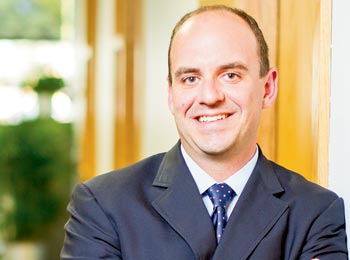 |
 |
 |
2013 Benefits Special Report
Mid-market solution for employee benefit programs Using a group captive for medical stop loss coverage By Michael J. Moody, MBA, ARM Ask any employer about the biggest challenges they are facing, and the cost of employee health coverage is likely to be high on their list. Given the continued cost pressures in the health insurance field and the uncertainty surrounding the implementation of the 2010 Affordable Care Act (ACA), that's not too surprising. Corporations are struggling to determine the most cost-effective approach to maintain their employee benefit programs. While this is an issue for all organizations, it is particularly acute for mid-sized employers, since they have fewer alternatives to choose from and, typically, the least amount of information to make an educated decision. Historically, large employers have been able to avail themselves of the advantages associated with self-funding. However, today increasing numbers of mid-sized employers have been finding innovative ways to share experience as well. All employee benefit plans fall under the purview of The Employee Retirement Income Security Act of 1974 (ERISA), but because self-insured medical plans typically purchase employer reimbursement medical stop loss for large specific and aggregate claims, they do not require Department of Labor (DoL) approval for employer participation. Generally speaking, there are two basic methods open to multiple employer groups for self-insuring their employee claims collectively. One method utilizes a risk retention group (RRG). Despite a flurry of initial activity surrounding the RRG structure, it has proven to be more difficult than originally contemplated due to capital requirements and regulatory constraints. The second method used is a fronted, reinsurance captive program to provide group medical stop loss coverage. Growing interest from middle market accounts Jeff Fitzgerald, vice president-employee benefits for Innovative Captive Strategies (ICS), notes that the fronted reinsured captive programs have received the lion's share of activity lately. ICS has been active in the group reinsurance captive market now for several years. "By using the group reinsurance captive concept, mid-sized organizations can better finance employer-based health coverage." Fitzgerald adds, "There was some hesitation from groups up until the Supreme Court decision that confirmed the implementation of ACA." Since then, interest in the group captive concept "has grown significantly as fully insured carriers are predicting significant increases beginning in 2014." Most employers today recognize that their cost-effective option is to maintain their health coverage through some sort of self-funding vehicle. Fitzgerald points out, "The way we look at it, it's the captive which allows these smaller groups to self-fund with other employers whose interests are aligned with theirs." Further, he says, that while there is literature regarding large employers utilizing their captives for accident and health coverages in their single-parent captives, they have to qualify under DoL exemptions. Bottom line, Fitzgerald indicates that employer-based medical stop loss does not require the same exemption process. While ICS does have a division that can provide services for the single-parent, DoL-approved programs, Fitzgerald's unit deals exclusively with reinsurance captives that are provided on a group basis. This unit is structured to provide middle market group captive consulting and program management services. Since the passage of ACA, Fitzgerald points out, "There continues to be a concern, especially among mid-sized employers, about what is going to happen to fully insured rates over the next couple of years." While there are other options available, Fitzgerald says, "For most mid-sized companies, it only makes sense to consider the reinsurance group captive with a fronted carrier." By using this approach, "you can bring all of these things together, particularly when you can partner with a fronting carrier that understands what you are trying to do and can underwrite for that." As a company, ICS has been providing this type of group captive program for about 2 1/2 years. Currently, their fronting carriers are able to write coverage in all 50 states, but are not in all 50 states yet. These programs currently cover about 14,000 lives and are made up of one larger group captive and six more specialized programs. These specialty programs are either segmented by industry classification or a single broker involvement. The larger of the captives is an "open" program. Thus, Fitzgerald notes, it is open to any broker that fits the ICS profile, which he describes as "an agent with an existing book of business, which comes from a well-established, usually privately held, regional broker. For the most part these are brokers who are interested in moving to the next level of sophistication but do not want to do it all in-house." He adds that these brokers do not have to have an existing relationship with ICS, nor does the client need to participate in one of ICS's property or casualty captives. "Introducing clients to the health coverage program is a great way to start building a stronger relationship between the broker and his client." Fitzgerald lists a number of advantages gained by moving into the captive. The first one, he says, "is the economic scale that most groups gain when they band together" for the purpose of purchasing goods or services. Second, he notes that "by providing groups with a larger amount of participants, the results from a planning standpoint typically are much more predictable, thus adding credibility to the overall insurance projections." Finally, he notes, "The captive allows a group to also interact with other business owners and talk with each other about what they're currently doing and what they're doing within the health insurance area." All of these advantages serve to provide more credibility with this approach, which fosters more trust among participants, Fitzgerald states.
Conclusion Fitzgerald believes that employers have now reached the point where there is going to be a lot of focus on group solutions as a result of the health care reform. "What can happen," he says, is that "some of them are going to be very successful because they managed to get into the right captive with the right employers." But, he indicates "for the most part, this is left to chance in the first year and the key is to align themselves with other groups who are interested in evolving in subsequent years." With an ICS program the whole issue revolves around relationships. He believes that it's a relationship-driven market, and if the captive owners all work towards the same goal, the chances of success are far superior. ICS has found that typically it's not necessarily the cost of the claim or the particular network discount that's the biggest issue, but rather it's the claim itself that is the concern; thus, avoiding these types of losses in the first place is the most long-term, cost-effective option for employers. Further, he believes that many of these group scenarios require an entrepreneurial solution. "These types of solutions are the kinds of things that ICS works on all the time in the property and casualty side the business," says Fitzgerald. But he also notes most employers are concerned about doing that kind of approach under a tighter ERISA-controlled regulatory environment. So ICS believes that under the current regulatory climate, the group reinsurance captive concept is the most appropriate for mid-sized employers
|
|||||
| |||||
| ©The Rough Notes Company. No part of this publication may be reproduced, translated, stored in a database or retrieval system, or transmitted in any form by electronic, mechanical, photocopying, recording, or by other means, except as expressly permitted by the publisher. For permission contact Samuel W. Berman. |

